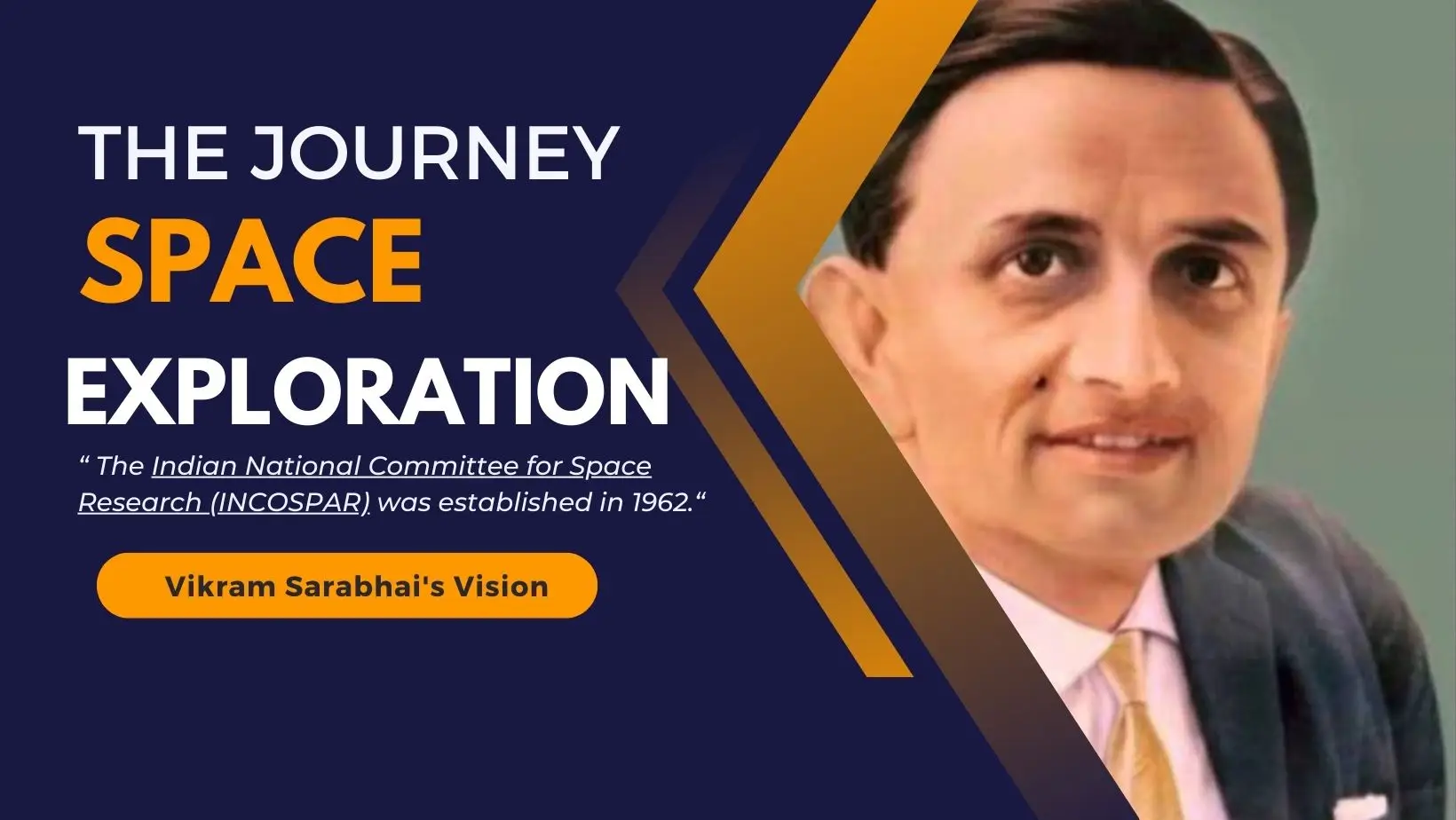Table of Contents
- Dr. Vikram Sarabhai’s Vision
- Milestones in Space Exploration
- Foundations Laid: INCOSPAR and ISRO
- Formation of DOS and Focus Areas
- Initiating Satellite Communication: ESCES and Beyond
- Pioneering Applications: KrishiDarshan and SITE
- Expansion and Advancements: STEP and KCP
- Laying the Foundation: ‘Aryabhata’ and SLV-3
- A Journey of Innovation and Excellence
Let us discuss the incredible adventure of space exploration with ISRO, which fulfils Vikram Sarabhai’s visionary dream. Discover the inspirational story of India’s space exploration,
creativity, and success. It pioneered the creation of cutting-edge space transportation technologies, groundbreaking application programmes, and advanced satellites designed for communication and remote sensing.
Dr. Vikram Sarabhai’s Vision
India to lead the country’s foray into space exploration. Dr. Sarabhai’s unwavering conviction was that the resources available in space could address real societal challenges.
The Indian space program started with a structured approach. It focused on satellites for communication and remote sensing. It also prioritized developing a space transportation system. Application programs were integral to its strategy.
Milestones in Space Exploration
Foundations Laid: INCOSPAR and ISRO
The Indian National Committee for Space Research (INCOSPAR) was established in 1962. (INCOSPAR) was established The Department of Atomic Energy to spearhead space research efforts. Subsequently, in August 1969, the Indian Space Research Organization (ISRO) emerged to replace INCOSPAR. This marked the beginning of a new era in India’s space journey.
Formation of DOS and Focus Areas
By September 1972, ISRO was placed under the purview of DOS (Department of Space) was established. DOS was established to leading the the Space Commission. The Indian space program followed an organized methodology, beginning with the development of a space transportation system, application programs, and satellites for communication and remote sensing.
Initiating Satellite Communication: ESCES and Beyond
In 1967, the first ‘Experimental Satellite Communication Earth Station (ESCES)’ in Ahmedabad became operational. It was not only a pioneering communication hub, but it was also a teaching centre for Indian and international scientists and engineers.
Related Posts
Pioneering Applications: KrishiDarshan and SITE
Understanding the potential of satellite-based applications for national development, ISRO initiated a television program called ‘Krishi Darshan‘ to provide agricultural information to farmers. The success of this program paved the way for the Satellite Instructional Television Experiment (SITE), a monumental sociological experiment during 1975–76 that benefited hundreds of thousands of people across villages in six states.
Expansion and Advancements: STEP and KCP
The Satellite Telecommunication Experiments Project (STEP) followed SITE, focusing on telecommunication experiments in collaboration with the Post and Telegraph Department (P&T). This project aimed to enhance capabilities in the design, manufacture, and operation of ground facilities, setting the stage for India’s domestic satellite system, INSAT.
The ‘Kheda Communications Project (KCP)’ emerged as a localized endeavor, acting as a field laboratory for tailored program transmission in Gujarat’s Kheda district. KCP’s success in enhancing rural communication efficiency was recognized with the UNESCO-IPDC award in 1984.
Laying the Foundation: ‘Aryabhata’ and SLV-3
During this period, India achieved significant milestones, including the development of the first Indian spacecraft, ‘Aryabhata’, which was launched with the assistance of a Soviet Launcher. Notably, the creation of the first launch vehicle, SLV-3, capable of placing payloads in Low Earth Orbit (LEO), marked a significant achievement. Its successful maiden flight in 1980 marked a leap in vehicle design, propulsion technology, and launch operations competence.
A Journey of Innovation and Excellence
The journey of India’s space exploration has been characterized by visionary leadership, strategic planning, and persistent innovation. From its humble beginnings, ISRO has established itself as a global player in space technology, fueling India’s aspirations for scientific discovery, technological advancement, and societal progress.



